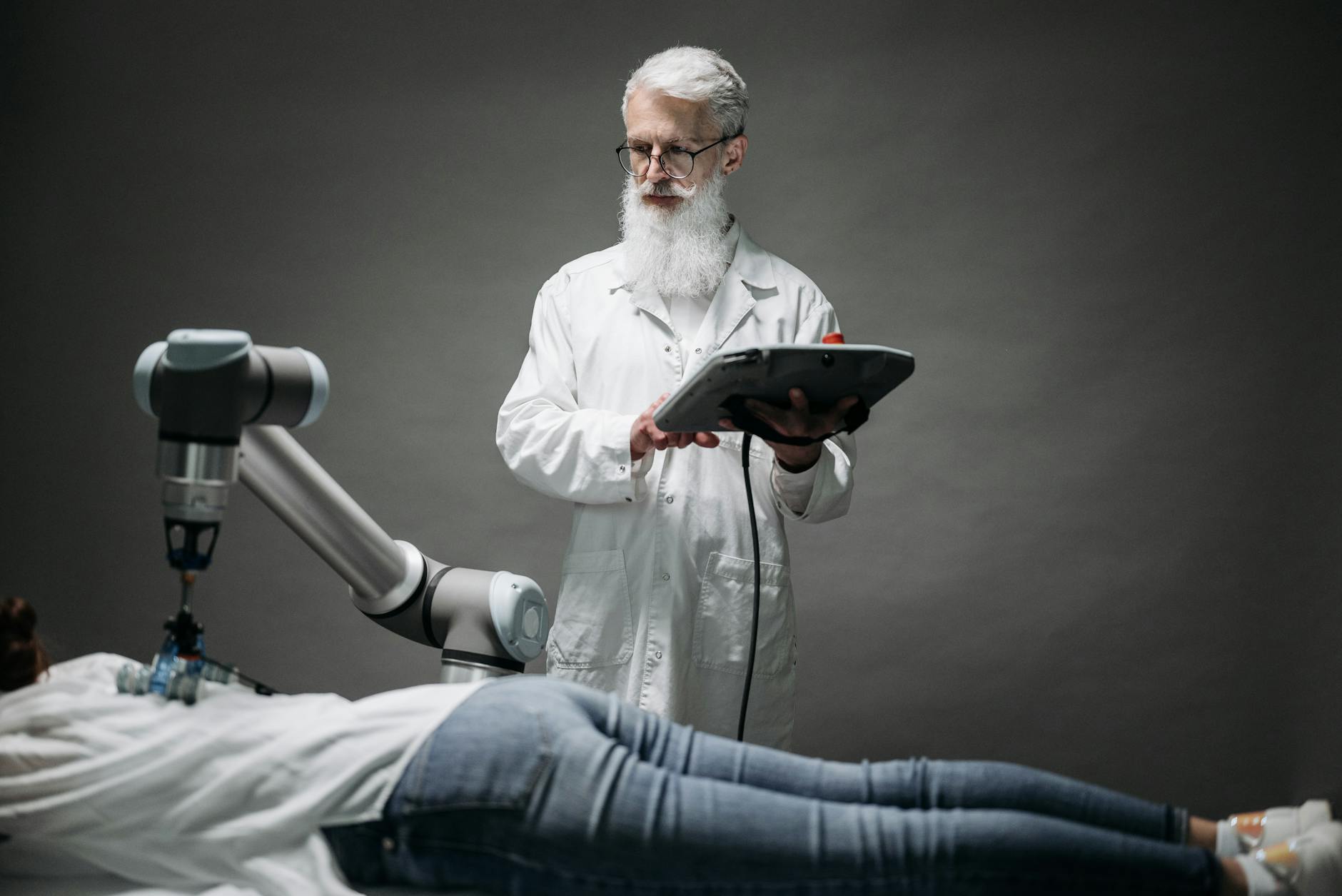
AI is transforming hospital impact forecasting, making it faster and more reliable. Industrial leaders can now anticipate disruptions and allocate resources with greater accuracy. From optimizing supply chains to predicting patient influx, AI offers actionable insights that were previously out of reach. This shift doesn’t just save time—it minimizes risks and enhances decision-making. To explore how technology is shaping broader industries, check out The Future of Manufacturing: Key Trends to Watch in 2024.
The Role of AI in Hospital Impact Forecasting
AI is reshaping how hospitals predict and prepare for challenges. By analyzing data and delivering actionable insights, it enables hospitals to optimize operations, resource allocation, and patient care. Let’s dive into some key areas where AI is making transformative strides.
Data Analysis and Predictive Modeling
AI processes extensive datasets from multiple sources in a fraction of the time it would take humans. Think of it as a super-advanced mathematician that never tires. By identifying underlying patterns, AI creates robust predictive models, helping hospitals anticipate everything from patient admissions to emergency room demand.
- Historical Data: AI tools analyze years of hospital records to detect seasonal or recurring trends.
- Real-Time Insights: Integrating live data, such as patient inflows or weather conditions, enables forecasts based on current events.
- Accuracy: Machine learning algorithms improve over time, ensuring predictions are more reliable with each iteration.
Harnessing this capability can significantly reduce guesswork, empowering decision-makers to act strategically. Predictive analytics like this also extend into other sectors, such as how industries manage inventory during uncertain times, as explored in Inventory Best Practices: What You Should Know.
Real-Time Monitoring and Alerts
In the fast-paced hospital environment, staying one step ahead is critical. AI systems monitor dynamic data inputs and provide real-time updates, reducing the lag that human monitoring often encounters. Imagine a virtual assistant tracking hospital bed availability or ICU demands constantly—AI does just that.
Here’s how AI achieves this:
- Real-Time Dashboards: AI-powered tools compile live statistics about patient admissions, discharges, and deep metrics like staff workloads.
- Automatic Notifications: Alerts are triggered for immediate attention when thresholds—like ICU bed shortages—are crossed.
- Integration with IoT Devices: Using wearables and smart devices, AI systems can relay patient vitals directly to hospital systems.
This ensures hospital leaders can make quick decisions, much like an air traffic controller managing incoming and outgoing flights.

Photo by Google DeepMind
The growing use of AI across hospitals isn’t confined merely to patient data. Real-time monitoring benefits a hospital’s supply chain, optimizing equipment orders and delivery timing. This concept parallels how manufacturers fine-tune their logistics pipelines.
Benefits of AI in Forecasting
AI is transforming the way hospitals predict and manage their operations. Whether it’s optimizing resources or enhancing patient outcomes, AI brings a level of precision that manual processes simply cannot achieve. Let’s explore how AI directly benefits hospital impact forecasting.
Improved Accuracy
AI has revolutionized how hospitals approach forecasting by significantly improving prediction accuracy. Traditional methods often rely on basic trend analysis, but AI incorporates vast data sets from multiple sources. This advanced capability allows hospitals to predict patient surges, equipment needs, and staffing requirements with minimal error.
For instance, machine learning algorithms continuously refine themselves, creating highly reliable models over time. This allows hospitals to identify hidden patterns in patient admissions, seasonal trends, or even disease outbreaks. Imagine knowing not just “more patients will arrive next winter,” but specifically how many, on which days, and why.
Cost Efficiency
Forecasting costs in hospitals can be a daunting task. AI helps streamline the process by optimizing resource allocation and avoiding waste. It examines real-time data on everything from staffing levels to equipment usage, ensuring that resources are neither overstocked nor underutilized.
AI enables hospitals to:
- Forecast staff schedules more effectively, lowering overtime costs.
- Reduce inventory waste, eliminating excessive stockpiling of supplies.
- Streamline operations, saving money on utilities and other operational expenditures.
By applying AI-driven forecasting tools, hospitals can optimize their budgets and invest savings into critical areas, such as new medical technologies or facility upgrades. This approach is analogous to fine-tuning a machine for optimum efficiency, ensuring minimal waste and maximum output. For insights on resource efficiency in other sectors, visit Essential Tools for Supply Chain Management.
Enhanced Patient Care
Perhaps the most profound impact of AI in forecasting is its effect on patient care. Accurate predictions allow hospitals to prepare for future patient needs, ensuring no one experiences delays in treatment or care. For example, AI can forecast ICU occupancy rates well ahead of time, ensuring adequate staff and equipment are available during critical periods.
Key benefits include:
- Fewer delays in treatment due to better resource alignment.
- Improved patient satisfaction as facilities meet demand without scrambling.
- Better outcomes in emergencies, where preparation can save lives.
Think of AI as a forward-looking compass that always points to where hospitals need to focus their resources. With it, healthcare organizations transform from reactive to proactive, achieving the gold standard in patient care delivery.
AI-driven advancements in forecasting set the stage for a new era in healthcare. With its ability to predict, allocate resources, and enhance operations seamlessly, AI offers unprecedented opportunities for improvement. Stay ahead with insights into other transformative technologies by exploring How AI is Transforming Logistics: Unlocking New Levels of Optimization.
Challenges and Considerations
Implementing AI in hospital impact forecasting is no small feat. While the technology unlocks incredible possibilities, it also introduces several challenges that cannot be ignored. Hospitals and their leaders must account for both technical and ethical concerns as they aim to integrate AI meaningfully.
Data Privacy Concerns
Patient data is at the core of AI-driven forecasting, but with great data comes great responsibility. Breaches in patient data security can lead to legal complications, loss of trust, and financial penalties.
- Compliance Requirements: Hospitals must adhere to strict regulations, such as HIPAA in the U.S., to protect patient privacy. Meeting these stringent standards can slow AI adoption.
- Data Sharing Risks: Sharing patient data with AI providers introduces vulnerabilities. Who owns the data? Who ensures its security?
- Cybersecurity Threats: Hospitals face risks from hackers attempting to steal sensitive patient records. AI systems also present new attack vectors.
For hospitals, building secure systems that respect patient privacy is crucial for AI acceptance. Industrial leaders interested in understanding similar challenges across sectors should explore topics in Venture Capital in the Industrial Sector: Key Trends and Opportunities.
Integration with Existing Systems
Hospitals operate with a myriad of legacy systems, from patient records to scheduling platforms. Merging these older systems with cutting-edge AI tools isn’t always smooth.
- Compatibility Issues: Existing systems may lack APIs or infrastructure for AI integration, delaying implementation.
- Training Challenges: Hospital staff often need extensive training to use new systems effectively. Not everyone is ready for the learning curve.
- Cost of Upgrades: Modernizing infrastructure to meet AI requirements can be prohibitively expensive for some hospitals.
Imagine trying to fit a new engine into an older car. Without the right parts and tools, it simply won’t work. Similarly, AI solutions often require an overhaul of outdated hospital systems to reach their full potential.

Photo by Pavel Danilyuk
Future Trends in AI-Driven Forecasting
AI has fundamentally reshaped hospital forecasting, but the future promises even greater advancements. Let’s explore emerging technologies, ethical considerations, and the pivotal role of industry leaders in shaping this transformation.
Emerging Technologies: Highlight upcoming technologies that could further enhance AI forecasting
AI continues to evolve at an unprecedented pace, with innovations set to revolutionize healthcare forecasting like never before. The integration of quantum computing, federated learning, and neural-symbolic AI holds immense promise.
- Quantum Computing: These systems process data exponentially faster than traditional computers, enabling even more precise forecasting models. Imagine predicting ICU bed needs for an entire city in seconds rather than hours.
- Federated Learning: A technique enabling AI to learn from decentralized data sources without compromising patient confidentiality. Hospitals can collaborate on AI models without ever sharing sensitive data.
- Neural-Symbolic AI: By merging deep learning with symbolic reasoning, new technologies can generate forecasts that are explainable and transparent—key for regulatory compliance.
These advancements are ushering in a smarter, more robust future for hospital impact forecasting. Interested in exploring how AI is transforming other industries? Check out Exploring the Industrial Metaverse.

Photo by RDNE Stock project
AI Ethics in Healthcare: Discuss the ethical implications of using AI in hospital forecasting
As AI becomes a staple in healthcare forecasting, ethical concerns take center stage. Transparency, fairness, and equity stand out as key challenges.
- Bias in AI Models: If not properly calibrated, AI could perpetuate inequalities in healthcare. For example, algorithms trained on non-representative patient demographics might lead to skewed forecasts.
- Data Privacy: The use of personal medical histories for AI training necessitates stringent safeguards. Federated learning and encrypted datasets are steps in the right direction but require widespread adoption.
- Human Oversight: Machines are powerful, but they should complement rather than replace human judgment. Decision-making must remain a collaborative process between AI and medical professionals.
Addressing these issues requires ongoing vigilance and ethical training for both AI developers and users in healthcare. For more insights, visit Industry White Papers and Reports.
Role of Industry Leaders: Examine how CEOs and industrial leaders can influence AI adoption
CEOs and industrial leaders play an instrumental role in driving AI adoption across healthcare. Their influence impacts everything from funding decisions to setting ethical frameworks.
- Strategic Investments: Leaders can allocate resources for training programs and the infrastructure required for AI implementation.
- Building Multi-Disciplinary Teams: Expert teams combining IT specialists, healthcare professionals, and ethicists ensure AI systems address real-world needs effectively.
- Advocacy for Ethical AI: CEOs can advocate for industry-wide regulations and best practices, fostering trust in AI-driven solutions.
Leaders must also evangelize AI’s potential to healthcare stakeholders, ensuring buy-in and collaboration across all levels. For industrial leaders looking to enhance partnerships, explore The Importance of Supplier Collaboration.
Conclusion
AI is transforming hospital forecasting, enabling leaders to make precise, data-driven decisions for resource allocation and patient care. By integrating advanced technologies, hospitals can anticipate challenges and respond effectively, reducing waste and improving efficiency.
This evolution is a call to action for industrial and healthcare leaders. Invest in AI-driven tools, adapt your systems, and prioritize ethical practices to unlock the full potential of this technology. The future of hospital impact forecasting depends on bold steps today.
For a closer look at the transformative potential of technology across industries, check out Top Startup Trends Shaping 2024: What to Expect.